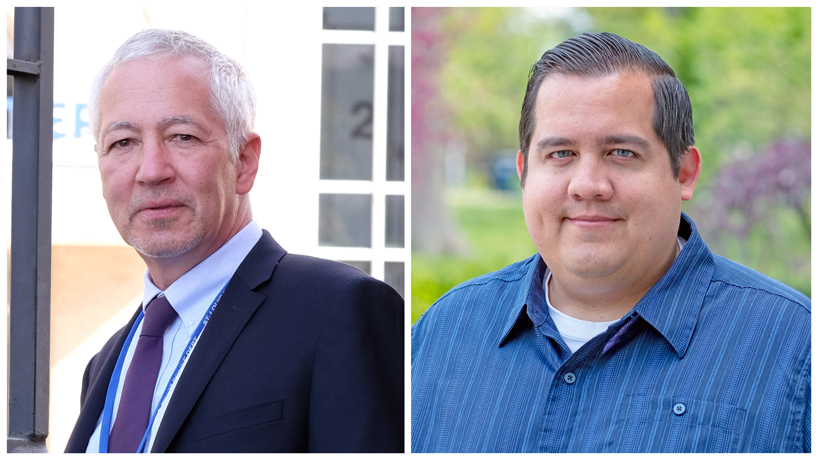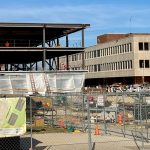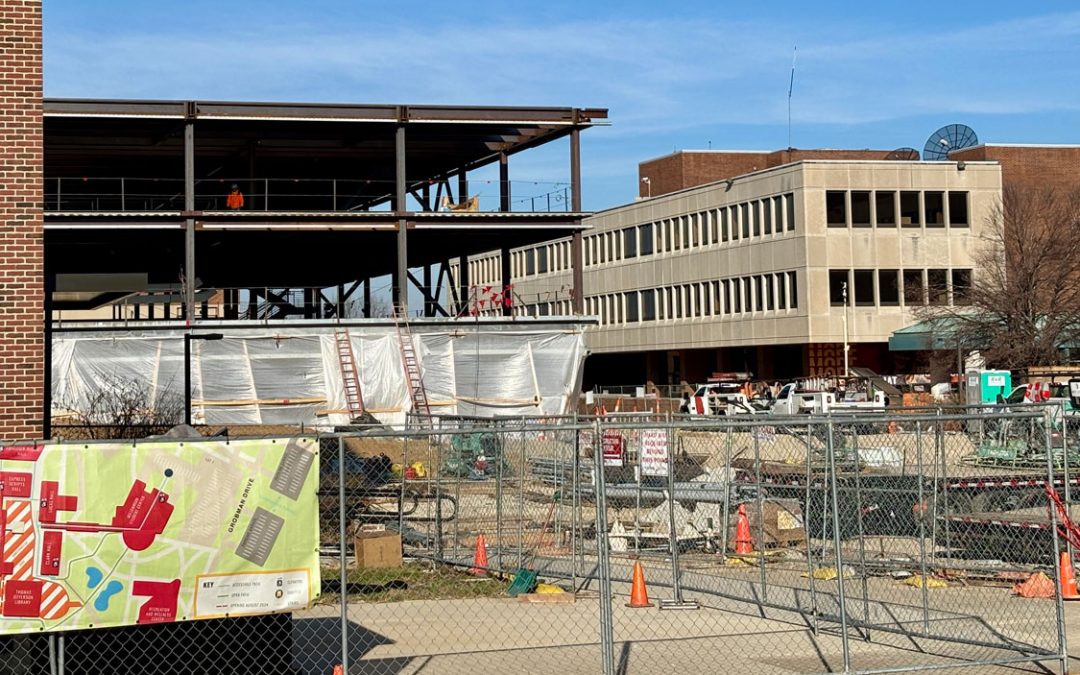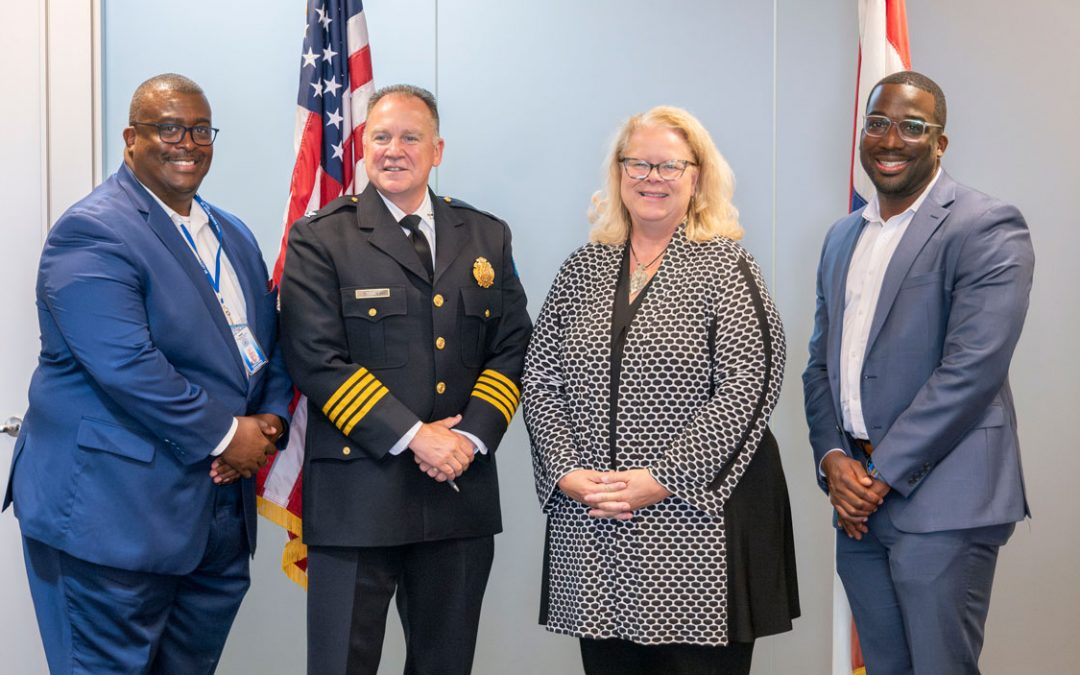
Research from Curators’ Distinguished Professor Emeritus Richard Rosenfeld (at left) and graduate research assistant Ernesto Lopez on the spike in violent crime that’s been observed since last summer has helped inform the White House as it developed a new strategy. (Photos by August Jennewein)
The White House announced a new comprehensive strategy on Wednesday to combat the surge in violent crime, particularly gun crime, across the county – and it was informed by the work of researchers at the University of Missouri–St. Louis.
The fact sheet detailing the strategy, released by the Biden-Harris Administration, cites research done by UMSL criminologists, Richard Rosenfeld, a Curators’ Distinguished Professor Emeritus in the Department of Criminology and Criminal Justice, and Ernesto Lopez, a graduate research assistant pursuing his PhD in criminology and criminal justice, in conjunction with Thomas Abt, a senior fellow at the Council on Criminal Justice.
Pointing to the “Pandemic, Social Unrest, and Crime in U.S. Cities 2020 Year-End Update” prepared by the three researchers for the Council on Criminal Justice and Arnold Ventures, the fact sheet notes “Homicides rose 30%, and gun assaults rose 8% in large cities in 2020.”
It also notes that the number of homicides in the first quarter of 2021 was 24% higher than in the first quarter of 2020, and 49% higher than in the first quarter of 2019, citing an updated report by Rosenfeld and Lopez examining crime data through March.
“It’s gratifying to see our research cited by the White House,” Rosenfeld said. “Sometimes, social science can actually make a difference.”
Arnold Ventures supported the initial research Rosenfeld and Lopez did with Abt on how homicide rates were impacted by stay-at-home orders and business closings that took place as part of the initial response to the COVID-19 pandemic. They examined 64 large-size cities, including the 30 cities with the highest populations in the United States, and found that homicide rates had declined in April and May compared to the three-year averages from those months in those cities.
But even by last June, Rosenfeld was wary of those trends continuing, particularly with the murder of George Floyd prompting widespread unrest throughout the country.
“We ended that piece with a strong cautionary note,” Rosenfeld said last summer. “I certainly believe that, come June, July, through the summer, we’re going to see an increase in homicide and other violent crimes in part associated with the social unrest.”
The Council on Criminal Justice asked Rosenfeld, Lopez and Abt to consider submitting ongoing work on the topic as the pandemic continued, which they did.
They took advantage of publicly available data portals, maintained by individual cities, that showed information from every reported crime incident. Lopez downloaded the data each month and put them in a standardized format.
“What I would do is write syntax for Stata – which is a statistical software we use – I’d just pull the certain crime types we wanted out and do the best we can to try to match standard definitions of what we’re looking for,” Lopez said. “You have to do that for each city. While there’s similarities, there’s too many differences to use the same language for every city, so you have to modify it for each city.”
The results revealed the surge in gun violence that began last summer and has continued since. The quarterly reports have provided information not available elsewhere and have attracted widespread media attention.
It’s clear now that policymakers have also taken note of the UMSL researchers’ work as they take steps to try to change the trends in violent crime.














